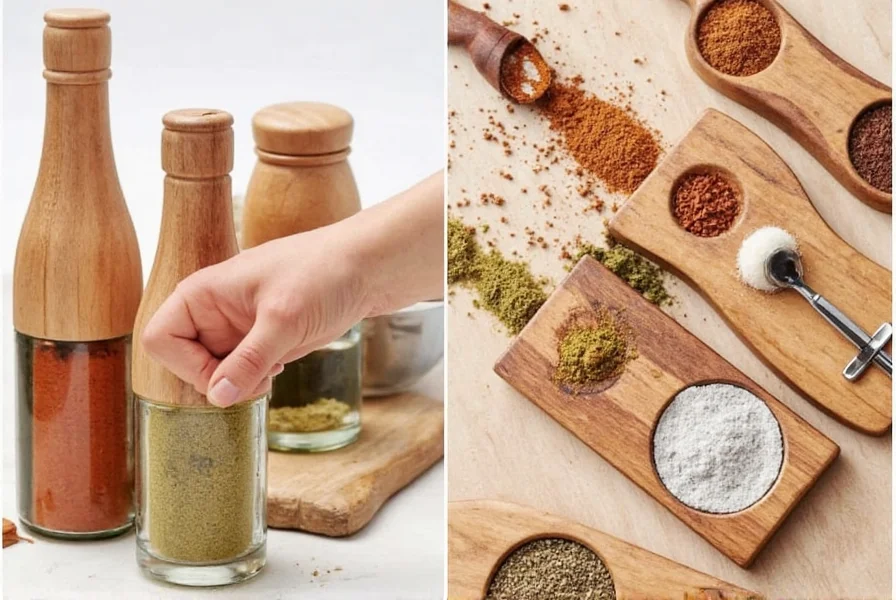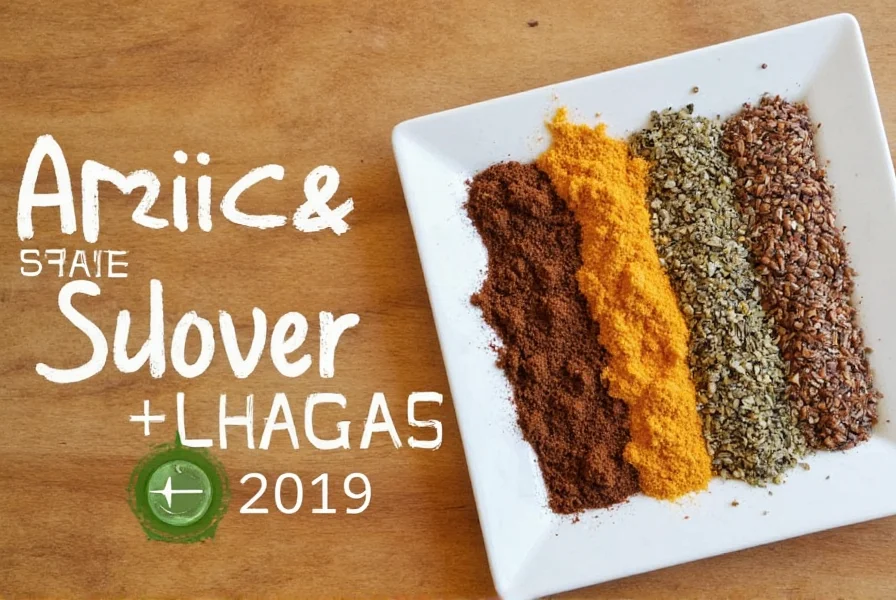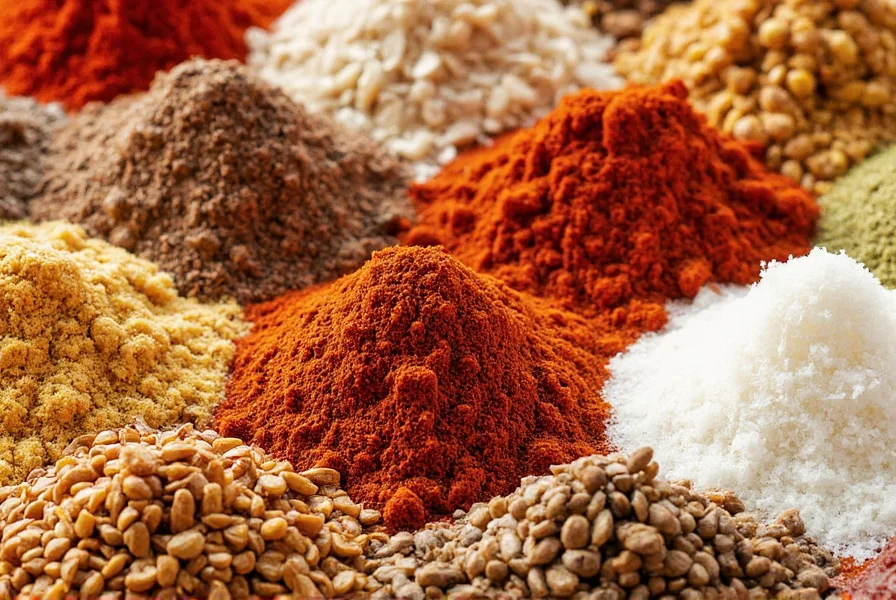Cooking spices are dried seeds, fruits, roots, barks, or other plant substances used to add flavor, aroma, and color to food. In this comprehensive guide, you'll learn exactly how to choose, store, and use cooking spices to transform your meals from ordinary to extraordinary. Whether you're a beginner or experienced cook, these expert tips will help you master the art of spice usage.
The Flavor Revolution Starts Here
Cooking spices have been used for centuries—not just for flavor but also for preservation, medicinal purposes, and even currency. Today, they're more accessible than ever, making them one of the most cost-effective tools in your culinary arsenal. In this article, we'll walk you through essential tips and tricks to help you get the most out of your cooking spice collection.
- Bold Tip: Toast whole spices before grinding for maximum flavor intensity.
- Pro Hack: Layer different spices at specific stages of cooking to build depth.
- Secret Move: Pair spices with fats (like oil or butter) to extract their full potential.
Common Cooking Spices and Their Best Uses
| Spice | Flavor Profile | Best For |
|---|---|---|
| Cumin | Earthy, nutty, smoky | Mexican, Indian, Middle Eastern dishes |
| Paprika | Sweet or spicy depending on type | Stews, rubs, soups |
| Turmeric | Earthy, bitter, slightly peppery | Rice dishes, curries, golden milk |
| Coriander | Citrusy, warm | Curries, baked goods, pickling |
| Garam Masala | Warm, complex blend | Indian cuisine, finishing touch |
The 10 Golden Rules of Using Cooking Spices
1. Know Your Spice Type: Whole vs Ground
Whole spices like cumin seeds or cinnamon sticks tend to hold their flavor longer and can be toasted or bloomed in oil for a richer taste. Ground spices, on the other hand, offer convenience but lose potency faster—store them properly and replace every 6–12 months.

2. Toast Before Grinding for Intensity
Don't skip this step! Toasting spices in a dry pan enhances their essential oils and deepens their flavor. Just be careful not to burn them—you want fragrant, not charred.
3. Add Spices at the Right Time
- At the beginning: For building a base (e.g., onions sautéed with mustard seeds).
- In the middle: To infuse sauces or braises (e.g., adding garam masala to a stew).
- At the end: For a fresh pop of flavor (e.g., sprinkling sumac on finished meat).
4. Balance Heat with Sweetness or Fat
If you accidentally go too heavy on the chili powder, don't panic! Balance fiery heat by adding a bit of sugar, yogurt, or coconut milk to smooth things out.
5. Understand Spice Combinations
Some classic combos that never fail:
- Cumin + coriander = earthy warmth
- Cinnamon + allspice = cozy sweetness
- Smoked paprika + garlic powder = bold umami
6. Don't Overdo It
It's easy to over-season when using strong spices like cloves or cardamom. Start with a pinch and adjust as needed—remember, you can always add more!
7. Store Spices Properly
To preserve freshness, keep your cooking spice stash away from heat, light, and moisture. Use dark glass jars or metal tins and store them in a cool, dry cabinet.

8. Taste as You Go
This can't be stressed enough. Taste frequently during cooking to ensure flavors are balanced. If something feels off, try adjusting with acid (like lemon juice), salt, or another complementary spice.
9. Build Layers of Flavor
Think of spices like instruments in an orchestra—they need harmony. Layering spices throughout the cooking process allows each to shine while contributing to a complex final flavor.
10. Try Regional Spice Blends
Pre-mixed spice blends like curry powder, za'atar, ras el hanout, or Old Bay can elevate your dishes with minimal effort. They also introduce you to authentic flavor profiles from around the world.
Buying Guide: Choosing the Best Cooking Spices
Selecting high-quality cooking spice can feel overwhelming with so many options available. Below are some standout products that offer value, flavor, and versatility.
1. McCormick Gourmet Organic Spices
- Features: USDA-certified organic, sustainably sourced
- Advantages: No additives or preservatives; great for clean eaters
- Use Cases: Everyday cooking, baking, meal prep
- Audience: Health-conscious cooks, families
- Occasion: Weekday dinners, healthy snacks
2. Penzeys Spices Bulk Blends
- Features: Available in bulk, customizable mixes
- Advantages: Affordable per ounce; wide variety of global blends
- Use Cases: Curries, marinades, rubs
- Audience: Home chefs, adventurous cooks
- Occasion: Weekend grilling, themed dinner nights
3. The Spice Lab Premium Collection
- Features: Fresh-packed, small-batch processing
- Advantages: High aroma retention; ideal for gourmet results
- Use Cases: Fine dining recipes, specialty dishes
- Audience: Professional chefs, upscale home kitchens
- Occasion: Dinner parties, holidays, special occasions
Top Cooking Spice Brands Comparison
| Brand | Organic? | Bulk Options | Premium Quality | Ideal For |
|---|---|---|---|---|
| McCormick Gourmet | ✔️ | ❌ | ✔️ | Daily cooking |
| Penzeys | ✔️ | ✔️ | ✔️ | Global cuisines |
| The Spice Lab | ✔️ | ✔️ | ✔️ | Gourmet meals |
Frequently Asked Questions About Cooking Spices
How long do cooking spices last before losing potency?
Whole spices typically stay fresh for 2-3 years when stored properly, while ground spices last about 6-12 months. You can test if your spices are still good by checking their color (should be vibrant, not faded) and performing a smell test—they should have a strong, distinctive aroma. If they've lost their scent or flavor, it's time to replace them.
What's the difference between whole spices and ground spices?
Whole spices are intact seeds, barks, or roots that you grind yourself when needed, while ground spices have already been processed into powder form. Whole spices retain their flavor and aroma much longer—up to three times longer than pre-ground versions. Grinding spices just before use releases fresh essential oils, resulting in significantly more vibrant flavor in your dishes.
Which 5 spices should every kitchen have as essentials?
According to culinary experts and professional chefs, these five versatile spices form the foundation of any well-equipped kitchen: 1) Cumin (earthy, for Mexican and Indian dishes), 2) Paprika (sweet or smoked, for color and flavor), 3) Cinnamon (warm and sweet, for both savory and sweet dishes), 4) Black Pepper (freshly ground for universal seasoning), and 5) Coriander (citrusy notes that work in many global cuisines). These form a solid foundation you can build upon as your cooking skills develop.
Why do some recipes call for blooming spices in oil?
Bloomming spices in oil (also called tempering) releases their essential oils and volatile compounds, which are fat-soluble. This process significantly enhances their flavor and aroma, distributing them more evenly throughout the dish. It's particularly important for ground spices, which can taste dusty or raw if added directly to liquids. Heat the oil first, then add the spices and cook briefly until fragrant before proceeding with the recipe.
Can I substitute one spice for another in recipes?
Yes, but with some limitations. Some good substitutions include: cumin can sometimes replace chili powder (though milder), paprika can substitute for cayenne (use less as it's milder), and allspice can stand in for cloves (use half the amount). However, some spices like saffron or cardamom have unique flavors with no perfect substitutes. When substituting, start with less than the recipe calls for and taste as you go, as different spices have varying intensities.
How should I properly store my cooking spices?
Store spices in airtight containers away from heat, light, and moisture—the three enemies of spice freshness. Dark glass jars or metal tins in a cool, dark cabinet are ideal. Avoid storing spices above the stove or in clear containers on open shelves. Whole spices last longer than ground, so consider buying whole spices and grinding them as needed. Never store spices in the refrigerator, as moisture will degrade their quality faster.
Conclusion: Elevate Every Dish with Cooking Spice Mastery
Mastering the art of using cooking spices opens up a world of flavor right in your own kitchen. With these practical tips, expert advice, and a few quality ingredients, you can create vibrant, aromatic dishes that will impress anyone at the table. Remember: spices are more than just seasonings—they're the soul of any great meal.
So next time you reach for that shaker or jar, think beyond just adding flavor—think about layering textures, enhancing aromas, and crafting unforgettable experiences with every bite. Happy cooking!











 浙公网安备
33010002000092号
浙公网安备
33010002000092号 浙B2-20120091-4
浙B2-20120091-4